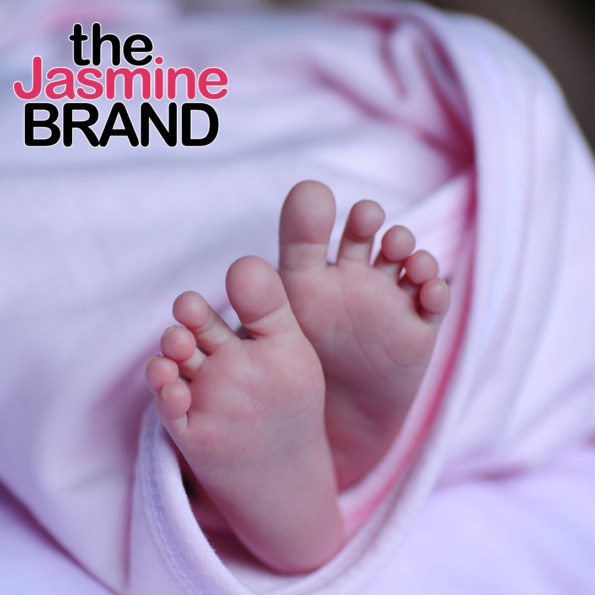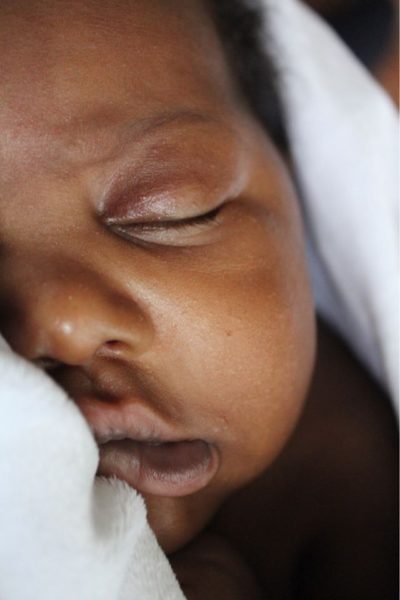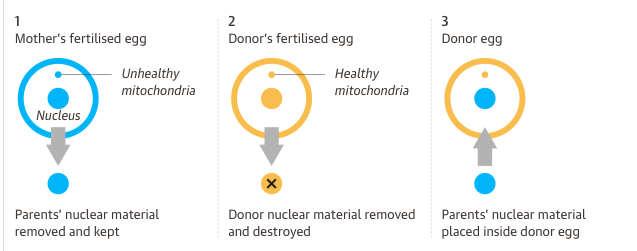First Babies Conceived Using DNA From Three People Due To Groundbreaking IVF Procedure

First Babies Conceived Using DNA From Three People Due To Groundbreaking IVF Procedure
Science never ceases to amaze us!
According to new findings, the United Kingdom just saw its first babies (reportedly fewer than five) born from the DNA of three individuals after the doctors performed an innovative technique by the name of mitochondrial donation treatment.

(via nappy/Pexels)
The operation, which was created with the intent to prevent offspring from “inheriting incurable diseases,” utilizes egg tissue from healthy female donors to produce IVF embryos that don’t contain dangerous mutations that their carrier could pass down.
Reportedly, the embryos consist of sperm and egg from their biological parents with mitochondria (small “battery-like” structures) from the donor’s egg. Infants birthed through the procedure have DNA from the mother and father, plus an estimate of 37 genes from the donor.
Researchers first conducted mitochondrial replacement therapy (different term, same process) at the Newcastle Fertility Centre in the United Kingdom, with the sole purpose to aid women with mutated mitochondria to have genetic-disorder-free pregnancies.
An article explaining the harm of mitochondrial issues from the Children’s Hospital of Philadelphia read:
“Mitochondrial disorders impair the function of mitochondria, the tiny compartments in every cell of the body that produce the energy needed by cells. Depending on which cells have fewer or lower-functioning mitochondria, different symptoms may occur. Organs and other parts of the body that require more energy, such as the heart, muscles, and brain, are often affected. Mitochondrial disease is the name for a large number of mitochondrial disorders, with different genetic causes and presentations.”

via The Guardian
After receiving approval from the parliament to go forward with it, the Newcastle clinic was officially licensed to execute the mitochondrial treatment for mothers.
A breakdown of the process detailed,
“First, the sperm from the father is used to [fertilize] the eggs from the affected mother and a healthy female donor. The nuclear genetic material from the donor’s egg is then removed and replaced with that from the couple’s [fertilized] egg. The resulting egg has a full set of chromosomes from both parents but carries the donor’s healthy mitochondria instead of the mother’s faulty ones. This is then implanted in the woman.”
While the United Kingdom is known for pioneering mitochondrial replacement therapy, the world’s first baby born through mitochondrial donation treatment reportedly happened in the United States back in 2016.
When speaking of reversal complications that could happen with the procedure, the University of Oxford’s Professor Dagan Wells (Reproductive Genetics) added:
“So far, the clinical experience with MRT has been encouraging, but the number of reported cases is far too small to draw any definitive conclusions about the safety or efficacy [of it]. Long-term follow-up of the children born is essential.”
What are your thoughts? Let us know in the comments below!


 Previous Article
Previous Article Next Article
Next Article Kerry Washington Producing Drama ‘Five Points’ w/ Facebook
Kerry Washington Producing Drama ‘Five Points’ w/ Facebook  Faith Evans & Stevie J Hint They’re Planning To Have A Child Together: I’m pretty fertile.
Faith Evans & Stevie J Hint They’re Planning To Have A Child Together: I’m pretty fertile.  Ariana Grande Tells ‘Billboard’ She Was ‘Dark & Deranged’ As A Child
Ariana Grande Tells ‘Billboard’ She Was ‘Dark & Deranged’ As A Child  Masika Kalysha Calls Out “Growing Up Hip-Hop ATL” Production: Who’s Responsible For This Trash!
Masika Kalysha Calls Out “Growing Up Hip-Hop ATL” Production: Who’s Responsible For This Trash!  Woman Who Stabbed Solange Knowles’ Friend Pleads No Contest to Misdemeanor
Woman Who Stabbed Solange Knowles’ Friend Pleads No Contest to Misdemeanor ![ATL Club Scene: Toya Wright, Tammy Rivera, Marlo Hampton, Monyetta Shaw, Malysia Pargo [Photos]](https://thejasminebrand.com/wp-content/uploads/2014/10/Toya-Wright-Marlo-Hampton-Tammy-Rivera-party-in-atlanta-2014-the-jasmine-brand-620x596.png) ATL Club Scene: Toya Wright, Tammy Rivera, Marlo Hampton, Monyetta Shaw, Malysia Pargo [Photos]
ATL Club Scene: Toya Wright, Tammy Rivera, Marlo Hampton, Monyetta Shaw, Malysia Pargo [Photos]  Just Hitched! Love & Hip Hop Atlanta’s Tammy Rivera & Waka Flocka Secretly Elope
Just Hitched! Love & Hip Hop Atlanta’s Tammy Rivera & Waka Flocka Secretly Elope ![Andra Day Will Appear on 40 million Coke Cups at McDonald’s + Snags ESSENCE Cover [Photo]](https://thejasminebrand.com/wp-content/uploads/2016/04/Screen-Shot-2016-04-25-at-2.25.06-PM-483x600.png) Andra Day Will Appear on 40 million Coke Cups at McDonald’s + Snags ESSENCE Cover [Photo]
Andra Day Will Appear on 40 million Coke Cups at McDonald’s + Snags ESSENCE Cover [Photo]